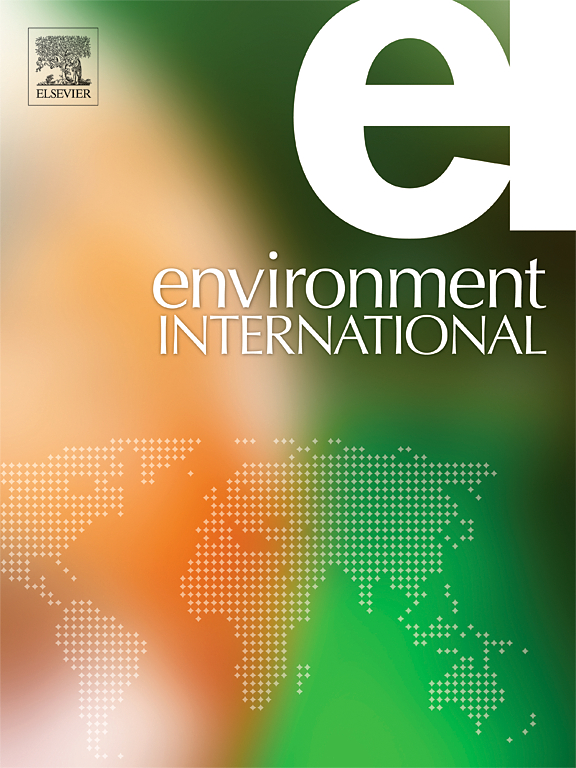Emergence of antibiotic-resistant pathogens in ancient deep-sea sediments predates anthropogenic antibiotic use
IF 10.3
1区 环境科学与生态学
Q1 ENVIRONMENTAL SCIENCES
引用次数: 0
Abstract
The rapid escalation of antibiotic resistance of pathogenic bacteria has become a critical global public health threat. Despite the extensive use of antibiotics in medicine, debates on the origins of antibiotic-resistance pathogenic bacterium remain unresolved. In this study, five antibiotic-resistant pathogenic bacteria (S. epidermidis, S. warneri, A. viridans, B. cereus or S. haemolyticus), which could destroy the mouse intestines, were isolated from the deep-sea sediments with the geological ages of 8,008–23,931 years, indicating that the emergence of antibiotic-resistant pathogens predated the anthropogenic antibiotic use. The deep-sea pathogenic bacteria carried multiple antibiotic-resistant genes in their genomes, which exhibited the antibiotic resistance comparable to those of the current antibiotic-resistant pathogens. During the long history of coexistence with the antibiotic-producing bacterium in the deep sea, the deep-sea pathogenic bacteria evolved the resistance to antibiotics. The antibiotic-resistant pathogenic bacteria were distributed in the deep sea, the extreme ecosystem largely unaffected by human activities. In this context, our findings contributed novel insights into the natural origin and evolution of antibiotic-resistant pathogenic bacteria, providing a foundation for developing sustainable strategies to mitigate the global health challenge of antibiotic resistance.
在人类使用抗生素之前,古代深海沉积物中出现了耐抗生素病原体
致病菌抗生素耐药性的迅速升级已成为严重的全球公共卫生威胁。尽管在医学上广泛使用抗生素,但关于抗生素耐药病原菌起源的争论仍未得到解决。在本研究中,从地质年龄为8,008-23,931 年的深海沉积物中分离出5种可破坏小鼠肠道的耐抗生素病原菌(表皮链球菌、瓦尔纳氏链球菌、绿芽胞杆菌、蜡样芽胞杆菌和溶血链球菌),表明耐抗生素病原菌的出现早于人为抗生素的使用。深海致病菌基因组中携带多种耐药基因,表现出与目前耐药病原体相当的抗生素耐药性。在与产生抗生素的细菌在深海中长期共存的过程中,深海致病菌进化出了对抗生素的耐药性。耐药病原菌主要分布在深海这种不受人类活动影响的极端生态系统中。在此背景下,我们的研究结果为抗生素耐药病原菌的自然起源和进化提供了新的见解,为制定可持续战略以减轻抗生素耐药的全球健康挑战提供了基础。
本文章由计算机程序翻译,如有差异,请以英文原文为准。
求助全文
约1分钟内获得全文
求助全文
来源期刊

Environment International
环境科学-环境科学
CiteScore
21.90
自引率
3.40%
发文量
734
审稿时长
2.8 months
期刊介绍:
Environmental Health publishes manuscripts focusing on critical aspects of environmental and occupational medicine, including studies in toxicology and epidemiology, to illuminate the human health implications of exposure to environmental hazards. The journal adopts an open-access model and practices open peer review.
It caters to scientists and practitioners across all environmental science domains, directly or indirectly impacting human health and well-being. With a commitment to enhancing the prevention of environmentally-related health risks, Environmental Health serves as a public health journal for the community and scientists engaged in matters of public health significance concerning the environment.
 求助内容:
求助内容: 应助结果提醒方式:
应助结果提醒方式:


